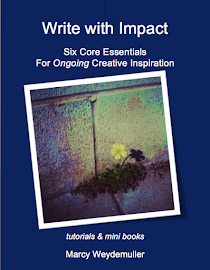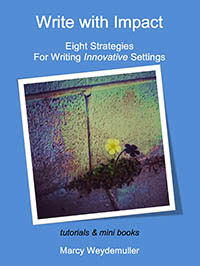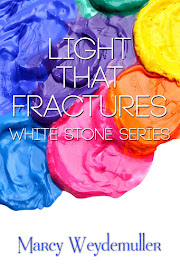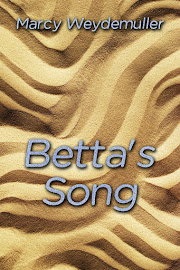Thursday, February 28, 2019
Words With Impact: Deepen Vocabulary Connections
Workshop: Discover
Words That Sing
“The writer
is attempting to find that place in a reader’s consciousness where myth already
exists, to free the ghosts and archetypes that stalk about and haunt.”
Jack
Hodgins
Word
Ideas.
Color Exercise
1.
Choose any color except green or blue. Do a five to ten minute free-write on
anything that comes to mind for that color whether cliché or not. Remember to
include phrases that are already used in common language like yellowbelly or
red-eye. Don’t limit yourself to any particular category—just write down any
thoughts that come to mind regardless of how unusual.
Brainstorm
basics give us a foundation to build from. We develop an instinct for when we
need to connect details with our emotions, and also what particular methods
will be most effective. Often the brainstorm exercises can help to find the
bridges to connect with our characters in their worlds in order to deepen their
reality. And there are so many varieties to choose from. It’s good to have a
basic familiar style to jumpstart ideas and then one you often resist to
stretch the idea muscles.
Note: I
have not read the essay from which the following excerpt comes, and have no
knowledge or idea of what the original purpose is. My sole interest is the
intriguing way he references one color and the possibilities it raises to
develop word language literally and figuratively.
On Being Blue
A Philosophical Inquiry
by
William Gass
“Blue pencils, blue noses, blue movies, laws, blue
legs and stockings, the language of birds, bees, and flowers as sung by
longshoremen, that lead-like look the skin has when affected by cold,
contusion, sickness, fear; the rotten rum or gin they call blue ruin and the
blue devils of its delirium; Russian cats and oysters, a withheld or imprisoned
breath, the blue they say that diamonds have, deep holes in the ocean and the
blazers which English athletes earn that gentlemen may wear; afflictions of the
spirit — dumps, mopes, Mondays — all that's dismal — lowdown gloomy music, Nova
Scotians, cyanosis, hair rinse, bluing, bleach; the rare blue dahlia like that
blue moon shrewd things happen only once in, or the call for trumps in whist
(but who remembers whist or what the death of unplayed games is like?), and
correspondingly the flag, Blue Peter, which is our signal for getting under
way; a swift pitch, Confederate money, ……and, when in Hell, its neatly
landscaped rows of concrete huts and gas-blue flames; social registers,
examination booklets, blue bloods, balls, and bonnets, beards, coats, collars,
chips, and cheese . . . the pedantic, indecent and censorious . . . watered
twilight, sour sea: …..just as it's stood for fidelity.”
What words
most caught your attention or interest? Why? Which did you connect with and
which do find confusing?
Which
choice of words or categories he uses would fit most naturally into your own story’s
genre?
Action
Steps:
2. Take the list you wrote with your color choice and
now divide it into the categories with which William Gass has referenced the
color blue. For example, nature includes flowers, bees, and ocean. History
includes Civil War and the Holocaust. Metaphors include gloom and fidelity.
Don’t worry that some are confusing—just do the ones you recognize.
3. Now look back at your own list. Which references
are literal and which are figurative? What categories can you place your
connections in? What areas are missing? Can you add to them?
Share:
Which category and word captured your curiosity?
Read deep, marcy
Thursday, February 21, 2019
Words With Impact: Deepen Vocabulary
Workshop: Discover Words That Sing
“We store in
memory only images of value.” Patricia Hampl
Tying
the echoes of emotional resonance into our stories adds texture and depth that
helps support a story’s truth. It deepens our vocabulary both literally and
figuratively. We can take the codes we discover and deepen our word threads to
connect personally—even in situations we have never personally experienced.
There
was a poster once on facebook that basically said, “If you are depressed—you’re living in the past; if you are
anxious—you’re living in the future; if you are at peace, you’re living in the
present.” It’s interesting that all three are tied to memories and how we
may process them.
For
example, in the historically era movie Hugo,
the father lives in his present. Life is not easy or simple. He is raising his
son alone, working two demanding jobs, has virtually no extra time to spare and
yet every moment is filled with quality. He is dedicated to his son and his
craft and his pleasure in both exude love and peace.
His
brother also dedicates himself to the quality of his craft, showing
considerable diligence, while at the same time drowning his life in alcohol.
There is a clue that at one point these two brothers worked together, but no
explanation is given of the separation. All we see are two, almost opposite,
approaches to life after a season of grief.
Hugo’s
new acquaintance George Melie’s has buried his dreams and spent over a decade
trying not to remember. Yet when the past begins to crack open into the present,
he reacts with anxiety, fear and anger. He fights the possibility of a future
that might flood him with despair again.
Hugo
teeters between all three as he processes his own loss. He clings to hope by
spending each day faithful to the legacy of craft given by his father, and
uncle. He dreams of a future to push back the emotional pain, but hovers on
anxiety as every step closer also brings the threat of more loss. Every day he
must make the choice to follow peace in the present.
Memory
holds our emotional reservoir, both personal and public. Some memories are
buried so deep that we don’t recognize them when they echo in the present. We
have a fleeting pang or touch of comfort, and wonder why. We need these echoes
to help us bridge understanding and communication with others. Regardless of
language or status we immediately connect, or recognize, the joy of a newborn
child or the grief of a death.
Digging
deeper into memories for ourselves, and our characters, enable us to deepen
vocabulary regardless of genre. And connect with our readers in their settings,
their vocations, their character traits, and their traumas.
Action
Steps:
1. What past grief or potential future grief
is your character facing?
2. Write out a sketch of his personality
change for each version: anxious, depressed or at peace.
3. What circumstances could fuel that
outcome?
Share:
Did any reaction surprise you? Why or why not?
Read deep, marcy
Thursday, February 14, 2019
Words With Impact: Honest Code: Process
Workshop:
Discover Words That Sing
“What is art
but a way of seeing” Thomas Berger
Do
you remember playing a game as a child where you put your hands into a bag and
guessed what was inside? Do you still remember your reactions to cold noodles
or squishy pudding? Then each item you touched needed to be clearly identified
with concrete words in order to see who guessed the most correctly. Generalized
words weren’t good enough.
No
sensory observation is considered complete until the fictional character’s
emotional response is included. When eating new foods, or hearing new sounds,
the concrete details help the reader recognize the character as more real as he
reacts to the senses. Just as word choices need to be specific, so do the
sensory details need to be definitive, externally as images and internally as
personal reactions, like the shriek or shiver to those slimy noodles.
Words
that sing into our manuscripts are not like a recipe where we add varying amounts
of sugar, but instead where breath beats as fresh as each new dawn. It’s an
ongoing process to keep them natural and vibrant and beautiful.
This,
I think, is what Mollie Hunter reminds us—to be conscious of this in our
writing and remember the sense of awe that accompanies our first experiences,
and not to diminish their impact.
Learn to tap out the code and hope someone hears and understands.
Action
Steps:
1.
Set up a study/research journal for yourself for
writing images, movies, images, and reading images and choose a time frame to
focus on one only. Either, weekly or monthly.
2.
Within each category consider both the verbal
and silent themes you want to be your backbone and watch for words and images
that will apply.
3.
Also take into consideration the sub-categories
that may be involved specifically to your story’s genre. The weather threat of
a catastrophic hurricane will be different in an historical, a contemporary, or
a sci-fi setting.
Share:
What code concept impacted you the most in this discussion? Why?
Read deep, marcy
Thursday, February 7, 2019
Words With Impact: Honest Code: Sensory Vocabulary
Workshop:
Discover Words That Sing
“The senses
are as core a scene element as you can get, and are very important in writing
fiction because they transform flat words on a page into three-dimensional,
realistic scenes.” Jordan E. Rosenfeld
The
added beauty from a mythic world perspective is that the reality of common day-to-day
activities can be developed into shadows, as passages from long ago or as
foretelling to the future. They also have the potential to tap into echoes and
allusions and metaphors. One way to access allusion and echoes is through the
speech of metaphor, which enables us to enrich language and go beyond clichés.
For
example in our early draft we just write everything down as it comes to us
through our senses. Usually we lean on ordinary words for basic descriptions.
Then we go back through to paint in feelings and scenery and ambiance. But
sometimes we’re still stuck with the ordinary because it’s so familiar that
other thoughts or phrases just won’t come to mind without sounding artificial
or planted.
A
good exercise to try is to describe an object without saying what it is. Try it
out at the dinner table and see if your family can guess. This helps pull in
new sensory details.
When
eating new foods or hearing new sounds the concrete details help the reader
recognize the character as more real as he reacts to the senses. Actually no
sensory observation is complete until the fictional character’s emotional
response is included.
We
need the essential-specific word choices: salty-sour-sweet-bitter. If it smells
bad is it like a sewer, or low tide? However we also need to recognize that
what smells bad to one character may actually be sweet to another. As I’ve
mentioned in an earlier blog post, I discovered that one day when driving with
an elderly friend. I smelt something noxious and worried it was my car. I asked
if she could smell it and her reply was “isn’t it lovely?” Apparently we
smelled sulfur, which to her reminded her of where she grew up near sulfur
springs.
We
also can’t incorporate every item, but need to choose which specific details are
appropriate to enhance each scene. What will create the mood? Even in a fast moving
fight scene we can have character feel the sweat and taste the blood on his
lip. Concrete down to earth details that may or may not rise to metaphor, or
symbol.
Action Steps:
1. Repeat the “Read” the word action steps from last
week focusing solely on what you can remember were sensory details that caught
your attention or you most identified with. Write them down.
2. Choose the one that you found most curious or
unexpected as a connection. Then again check with a dictionary or thesaurus to make
a list of all the words you think would also have that impact. Which sensory
focus do you want to catch a reader attention in your own novel?
Share:
What was the funniest guess a family member shared?
Read deep, marcy
Subscribe to:
Posts (Atom)








